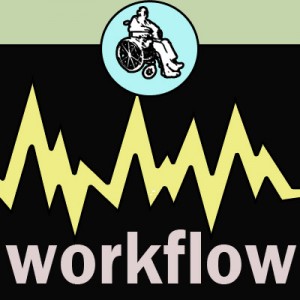 Elder care is difficult enough without balancing a full work schedule. Consider the toll for both the employee and employer.
Elder care is difficult enough without balancing a full work schedule. Consider the toll for both the employee and employer.
Mike Haberman does a great job of listing the elder care HR toll for both employees and employers.
In addition to the points outlined by Haberman, a recent Caring.com survey showed that not only does caring for a loved one of any age negatively affect an individual’s career, but it also negatively impacts family relationships. Twenty-five percent of the respondents confirmed this reality. Caring.com’s survey also revealed that caring for a loved one is the number one source of stress among the respondents (69%), ahead of the economic downturn and other medical problems in the family. Another eye-popping statistic of the survey shows that 58 percent of caregivers spend more than 10 hours a week providing caregiving services, while 22 percent spent more than 40 hours per week.
The Family and Medical Leave Act covers private employers employing 50 or more employees within a 75 mile radius (measured by surface road miles) of the worksite(s) for each working day during each of 20 or more calendar workweeks in the current or preceding calendar year.
Public agencies are covered employers without regard to the number of employees employed. Although the legal entity that employs the employee is normally the employer for purposes of determining coverage, joint or integrated employers may also be covered. Thus, if an employer employing 10 employees is found to be a joint employer with another entity employing 100 employees, then both entities would be covered under the FMLA.
FMLA’s definition of Serious Health Condition
To truly understand the U.S. Department of Labor’s Family and Medical Leave Act employers (and employees) should note the definition of “serious health condition.” The FMLA definition of a serious medical condition applies to the employee or the employees’ family member.
“Serious health condition” means an illness, injury, impairment, or physical or mental condition that involves either: Inpatient care (i.e., an overnight stay) in a hospital, hospice, or residential medical-care facility, including any period of incapacity (i.e., inability to work, attend school, or perform other regular daily activities) or subsequent treatment in connection with such inpatient care; or Continuing treatment by a health care provider, which includes:
- A period of incapacity lasting more than three consecutive, full calendar days, and any subsequent treatment or period of incapacity relating to the same condition that also includes:
- treatment two or more times by or under the supervision of a health care provider (i.e., in-person visits, the first within 7 days and both within 30 days of the first day of incapacity); or
- one treatment by a health care provider (i.e., an in-person visit within 7 days of the first day of incapacity) with a continuing regimen of
treatment (e.g., prescription medication, physical therapy); or- Any period of incapacity related to pregnancy or for prenatal care. A visit to the health care provider is not necessary for each absence; or
- Any period of incapacity or treatment for a chronic serious health condition
which continues over an extended period of time, requires periodic visits (at least twice a year) to a health care provider, and may involve occasional episodes of incapacity. A visit to a health care provider is not necessary for each absence; or- A period of incapacity that is permanent or long-term due to a condition for which treatment may not be effective. Only supervision by a health care provider is required, rather than active treatment; or
- Any absences to receive multiple treatments for restorative surgery or for a condition that would likely result in a period of incapacity of more than three days if not treated.
EAPs and Wellness
HR Advocate works with professional insurance agents at Savage & Associates, who provide a wide variety of employee benefit packages to their clients. EAPs are often coupled with other lines of coverage such as disability insurance or even dental and vision coverage.
Increasingly, we are seeing EAPs and company wellness programs coupled together as well. Employers tell us that they see EAPs as an important way to help employees having personal problems, increase workplace productivity and morale, support retention and recruitment, and also to reduce overall medical costs. Research has shown that over time, every dollar invested in an EAP can save the employer between $5 to $16.
Want to save costs and invest wisely? Connect with the HR Advocate Help Desk for more solutions.
